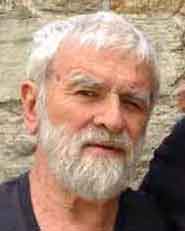As I read political history, I am distracted from understanding what happened by such typical formulations as “Country X went to war with Country Y.” On some level of understanding this is true, but unenlightening. This is just as unenlightening as the recent report that Cornel West was denied tenure by Harvard. The more enlightening description of what happened is that Cornell West was denied the right to apply for tenure by the President of Harvard, Lawrence S. Bacow. And a still more enlightening account would probe into Bacow’s reasons. [ For an analogous case, see my analysis: Andrew Chrucky, “Norman Finkelstein, DePaul, and U.S. Academia: Reductio Ad Absurdum of Centralized Universities,” July 23, 2007]
My point is that when dealing with governed institutions — whatever their nature — it is a prevalent norm to describe these institution as if they were agents. But institutions are like tools or machines which require a particular human agent to use them. And what I am calling as “enlightened” description requires identifying the human agent who makes the machine operate, and it requires a further probing into that agent’s reasons for acting as he did.
Suppose you read in a newspaper that Jones was struck and killed by a car. OK, on one level this is a correct description. But if you want to get into a more enlightened description, you would want to know where and when this happened, what were the circumstances, and who was the driver. Was this an accident? What was the condition of the driver? Was this an intentional act? Deliberate?
I am proposing a similar sort of description for the actions of governments and countries. There is always some “decider” in the government (as President W. George Bush, Jr. described himself — accurately).
Let’s consider the infamous case of the U.S. dropping atomic bombs on Hiroshima and Nagasaki in 1945.
Such an act requires the decision of the Commander and Chief of the Armed Forces: the President of the United States. The responsible agent in this case was Harry S. Truman. And to get some enlightenment, we would need to understand his reasons.
Let’s consider another example. The fall of Constantinople in 1453. On one level, we can describe this event as a successful siege of Constantinople by the Turks. But on a more enlightening level, the siege was the decision of Sultan Mohammed II for whatever reasons.
What am I driving at? It is clear to me that great battles and wars are the decisions of powerful individuals. By “powerful,” I simply mean that they can get others to do what they want. They can use others as chess pawns for their ambitions. Who are these “pawns”? Soldiers and civilians!
Take any battle or war. On both sides, after the battle or war there are countless dead, disabled, sick and suffering. Consider the so-called American Civil War (1861-65). Wikipedia lists 616,222-1,000,000+ dead. Who was the decider who wanted to “preserve the union”? Abraham Lincoln!
Political history with its battles and wars, including the maintenance of internal “order,” is the history of megalomaniacs and other ambitious individuals who sacrifice the lives of countless others for their own profits and glory.
The lesson I draw from this reflection is that the principle of the separation of powers in government should include the separation of powers in the executive branch, as is done, for example, in Switzerland. Switzerland has a seven-member Federal Council; whereas everywhere else there is either a sole President, a Prime-Minister, or sometimes both.

